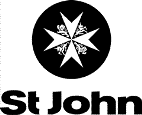Introduction
This condition is caused by a failure in the thermostat in the brain. This regulates the body temperature.
The body then becomes dangerously overheated usually due to a high fever or prolonged
exposure to heat.
Heatstroke can also result form the use of drugs such as ecstasy.
In some cases heatstroke follows heat exhaustion when sweating ceases and the body then cannot be cooled
by the evaporation of sweat. Heatstroke can develop with very little warning, causing unconsciousness within
minutes of the casualty feeling unwell.
Recognition
Recognition features may include:
- Headache
- Dizziness and discomfort
- Restlessness and confusion
- Hot flushed and dry skin
- A rapid deterioration in the level of response
- A full bounding pulse
- A body temperature above 40 degrees Celsius or 104 degrees Fahrenheit.
Treatment
Your aims are to lower casualty’s body temperature as quickly as possible and arrange urgent removal to hospital.
- You need to quickly move the casualty to a cool place and remove as much of the outer clothing as possible.
- Dial 999 or 112 for an ambulance
- Wrap the casualty in a cold wet sheet and keep the sheet wet until the temperature falls to 38 degrees Celsius, or 100.4
degrees Fahrenheit, under the tongue or under the armpit.
- If no sheet is available, fan the casualty or sponge them down with cold water. Once the casualty’s temperature
appears to have returned to normal replace the wet sheet with a dry one.
- Always monitor and record the vital signs, the level of response, pulse and breathing rate until help arrives.
- If the temperature starts to rise again repeat the cooling process.
- Caution though, if the casualty becomes unconscious open the airway and check breathing and be prepared to give rescue
breaths and chest compressions if necessary, or if the casualty is unconscious but breathing normally place them into the
recovery position, please refer to the relevant tips.

